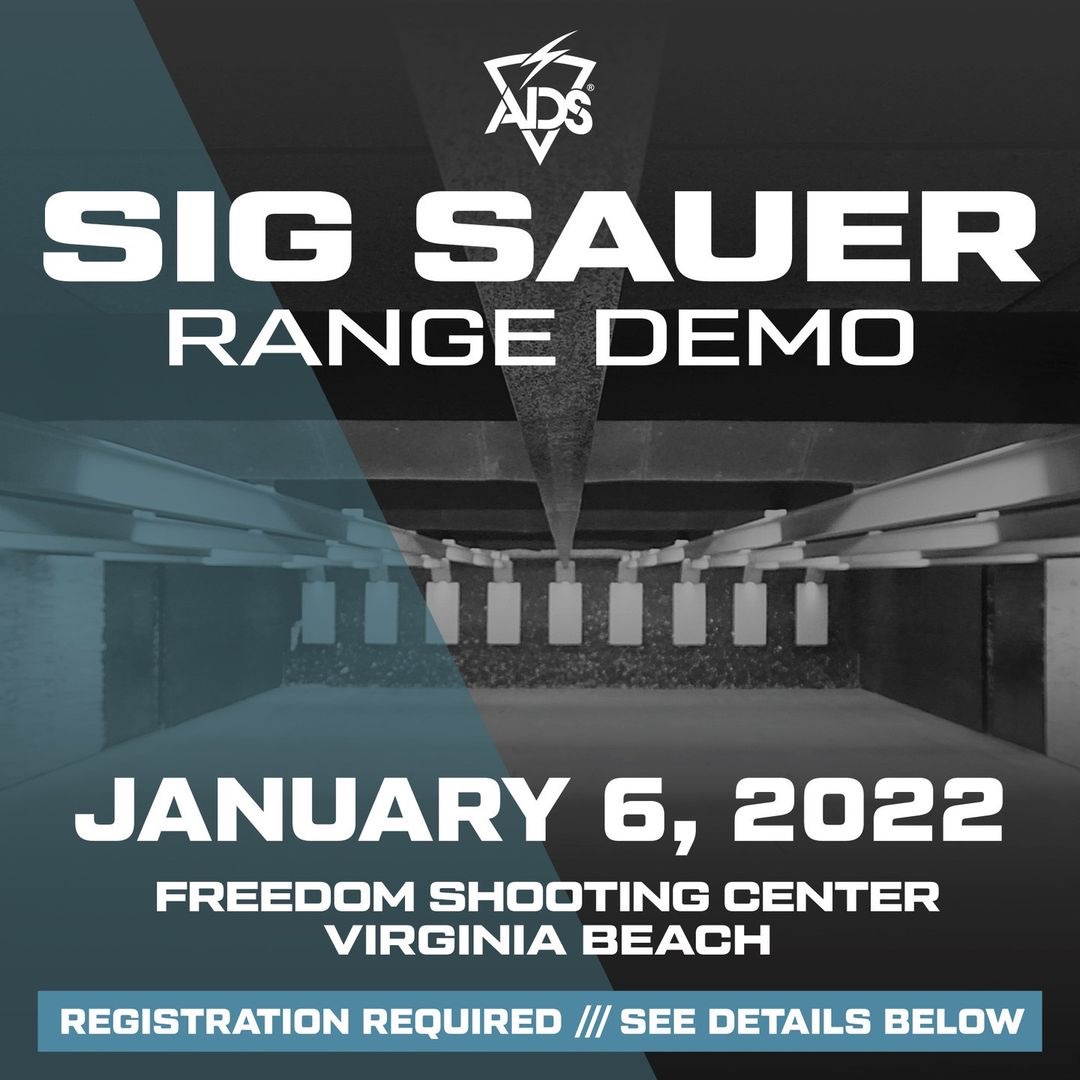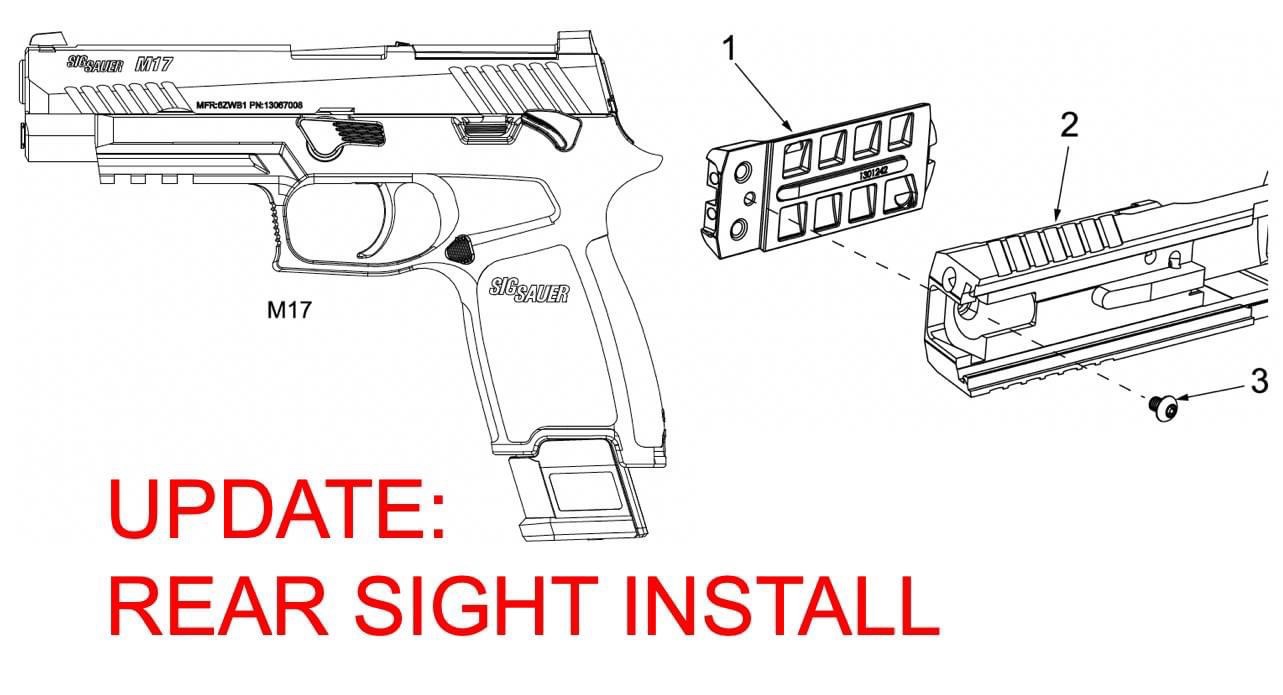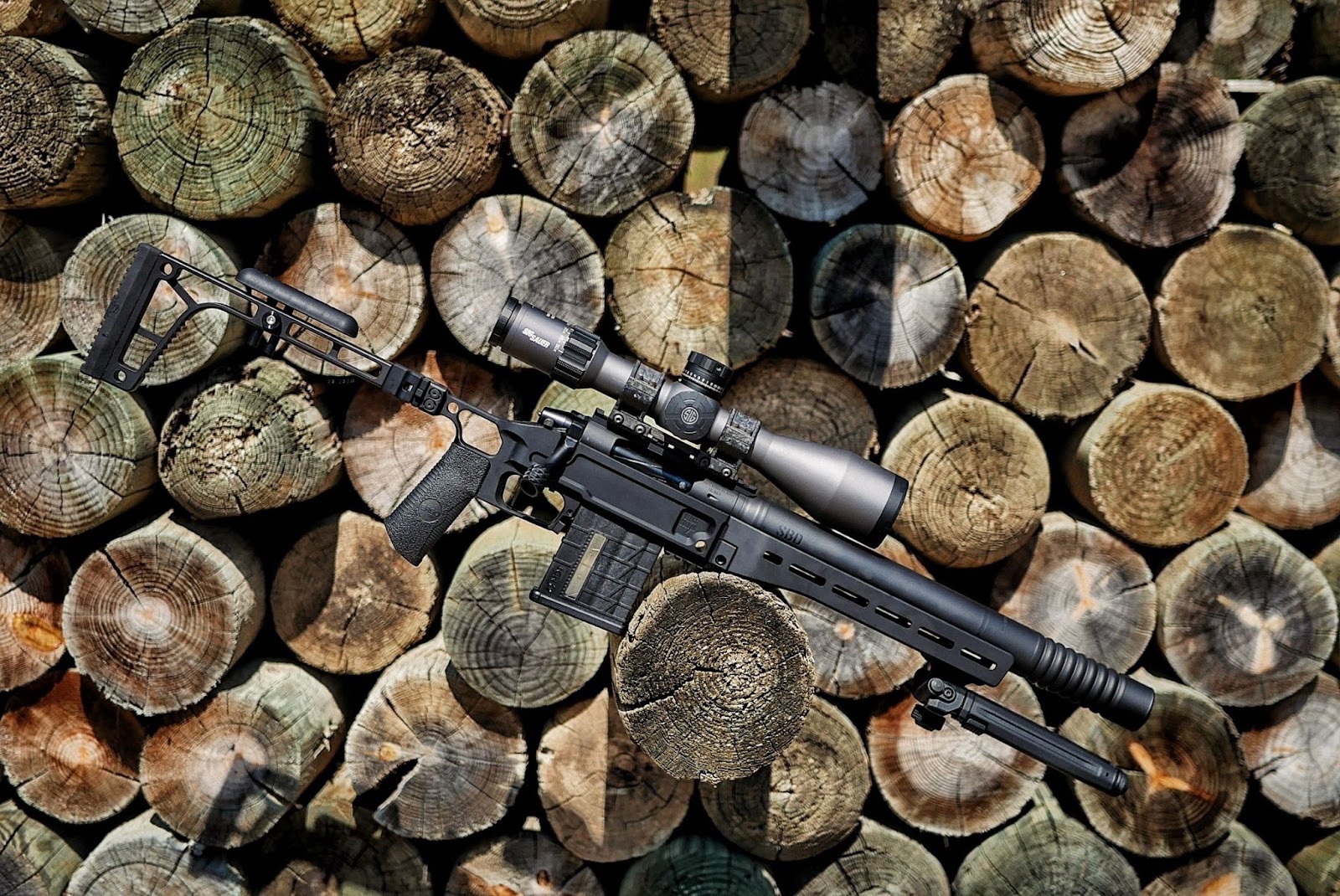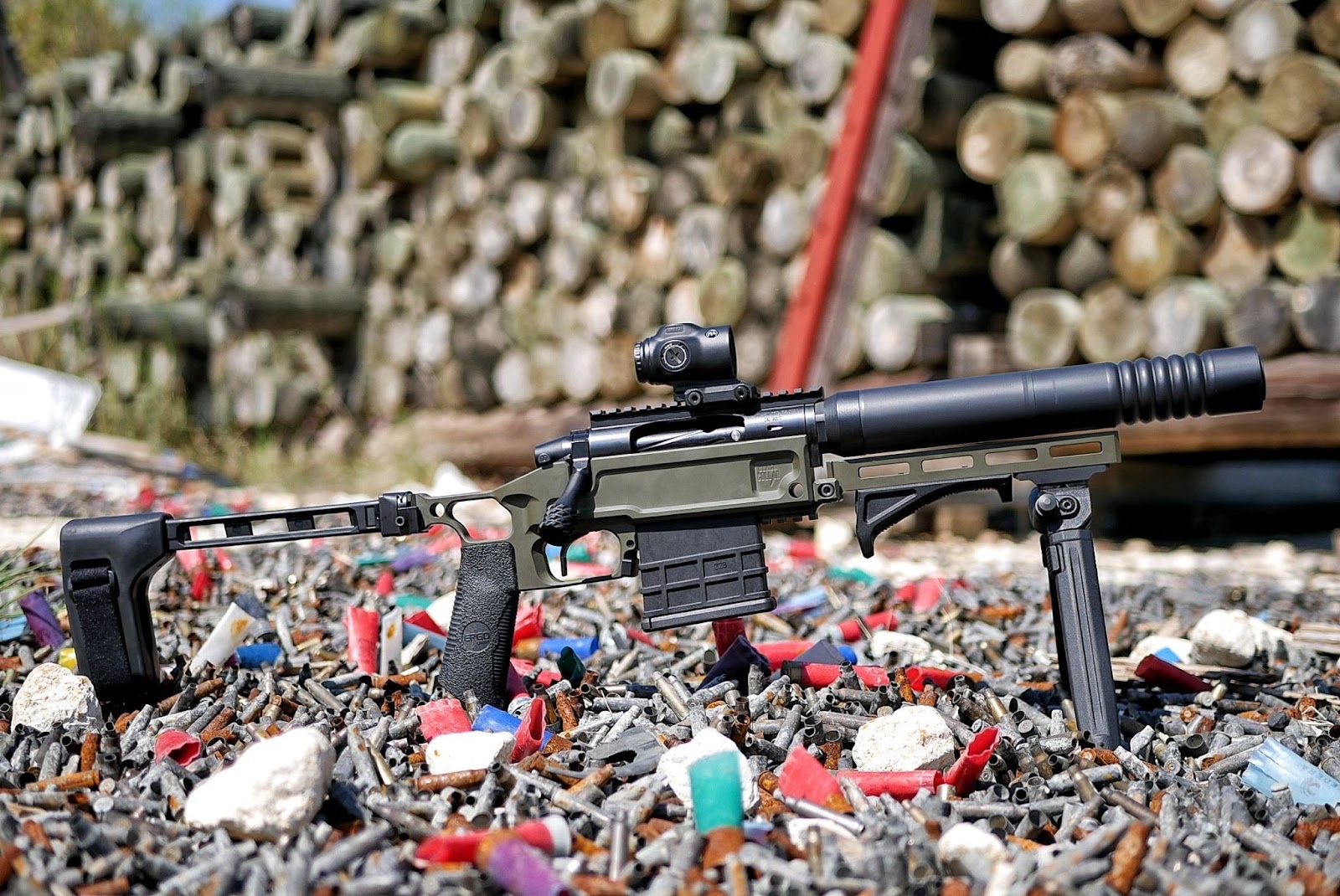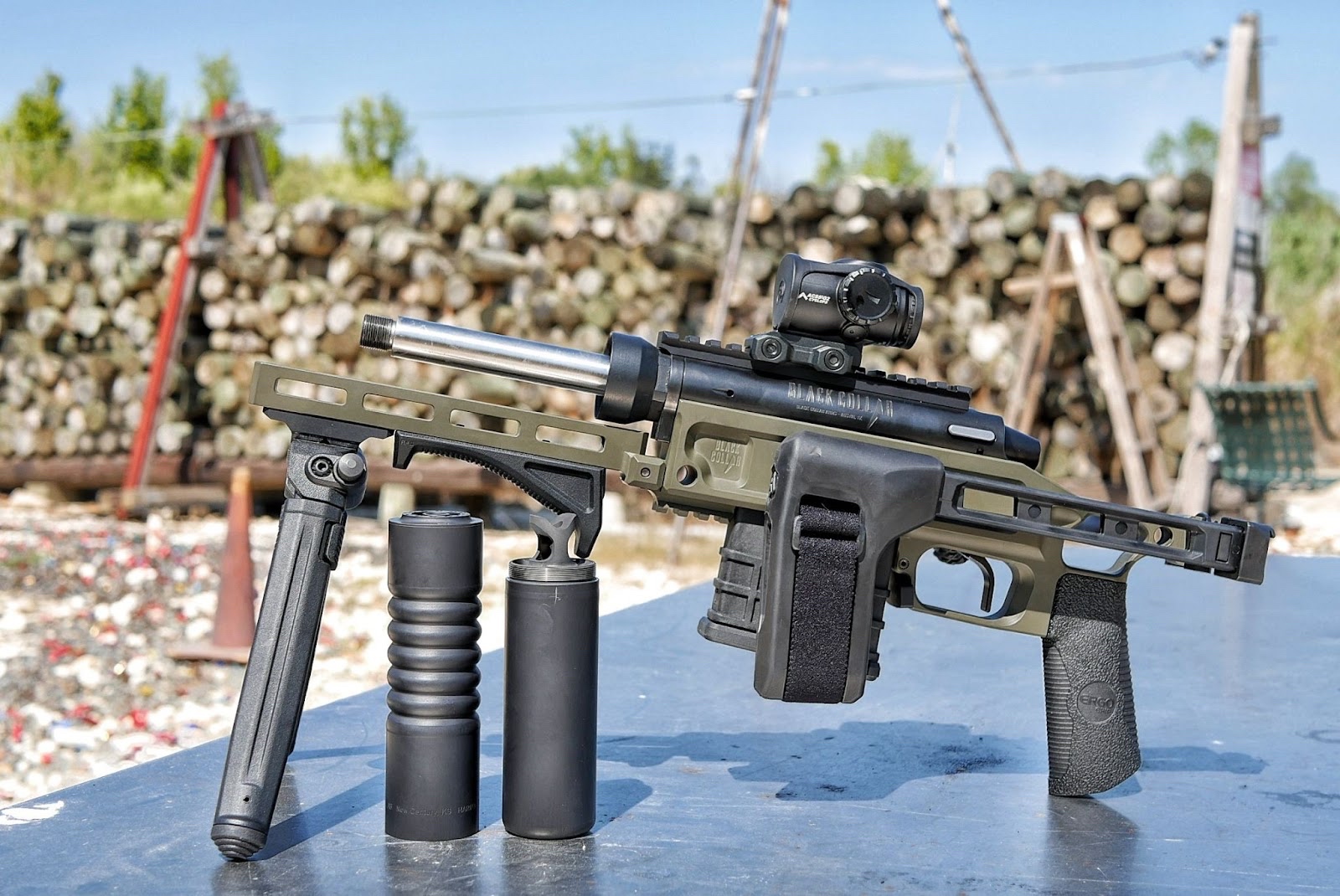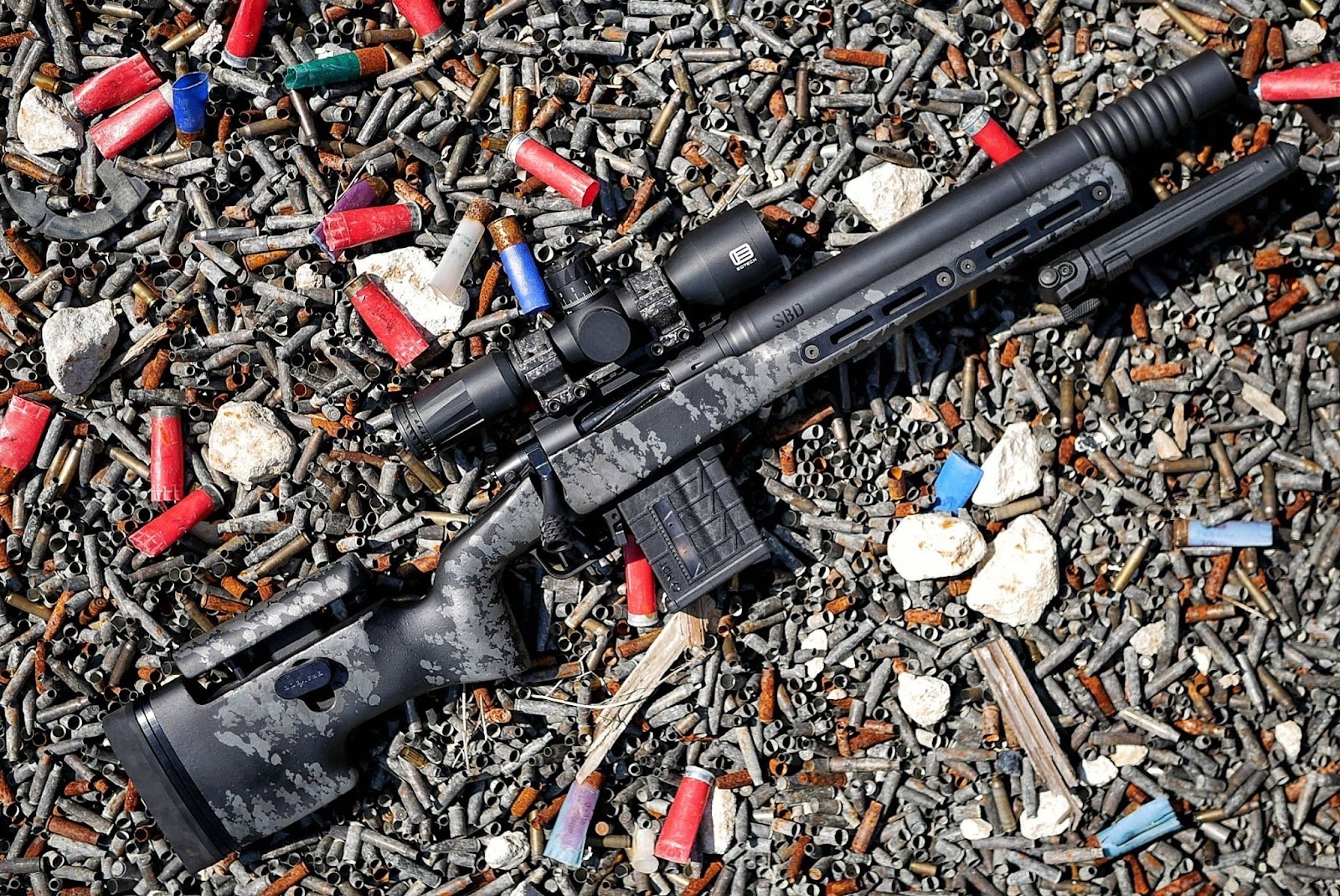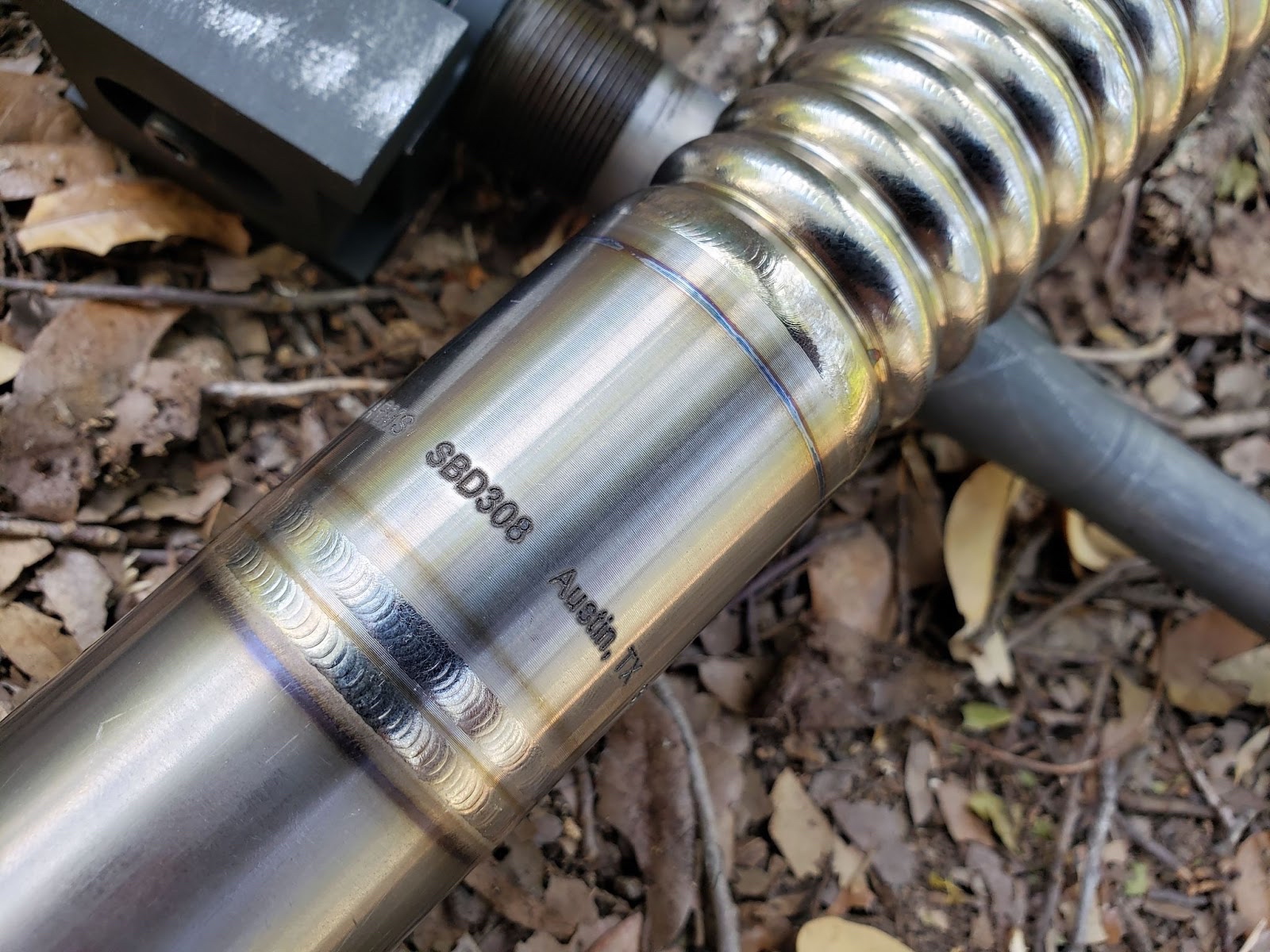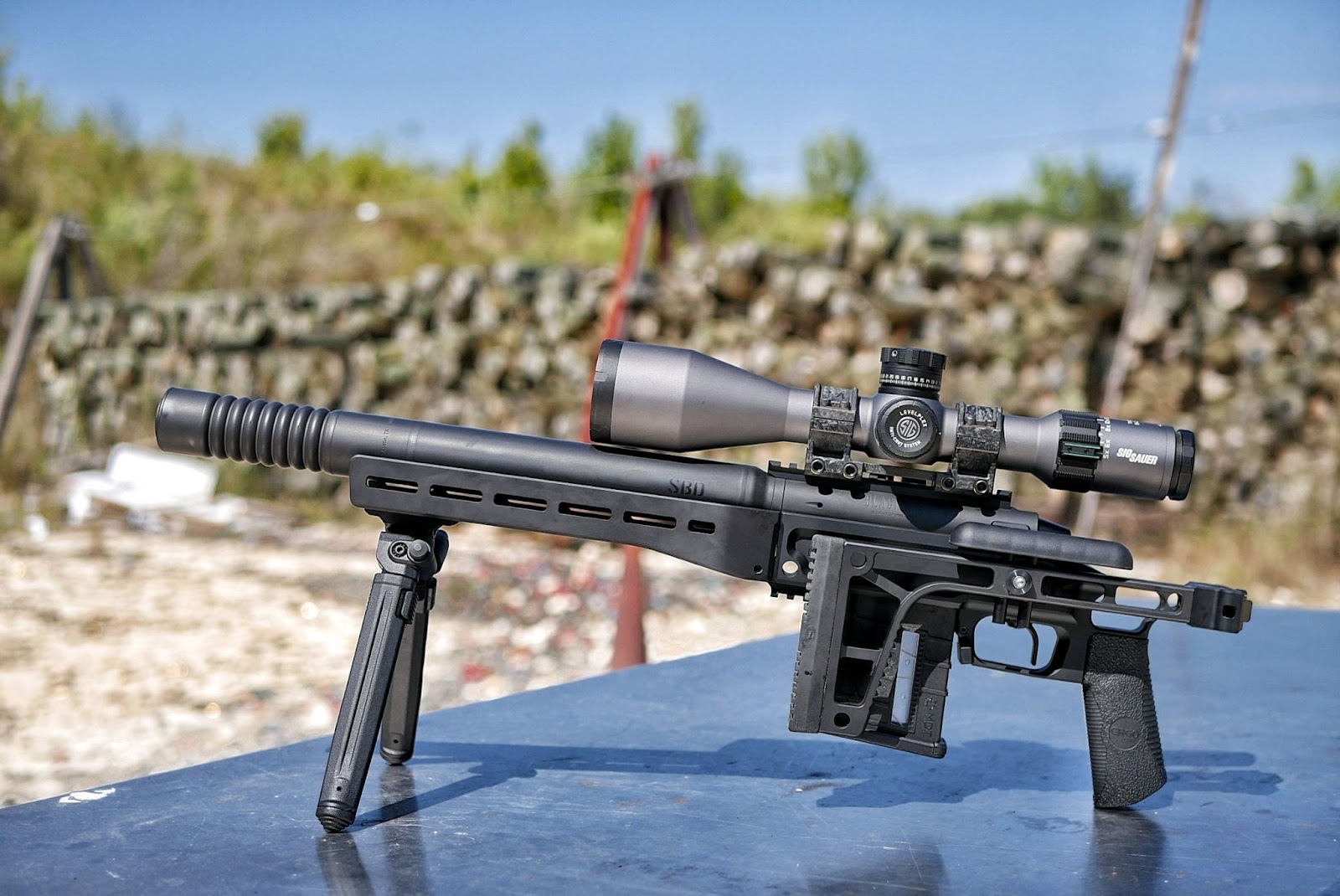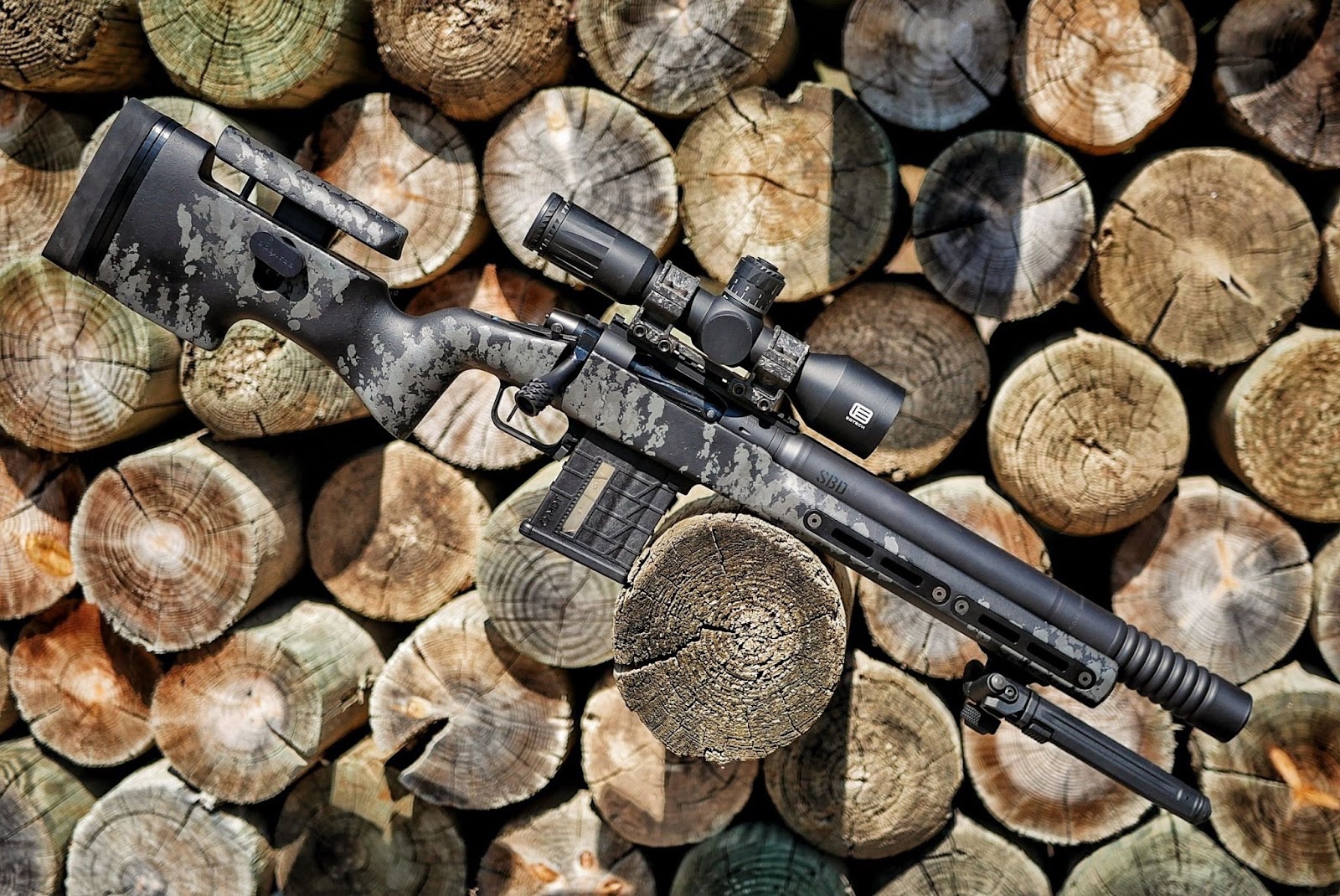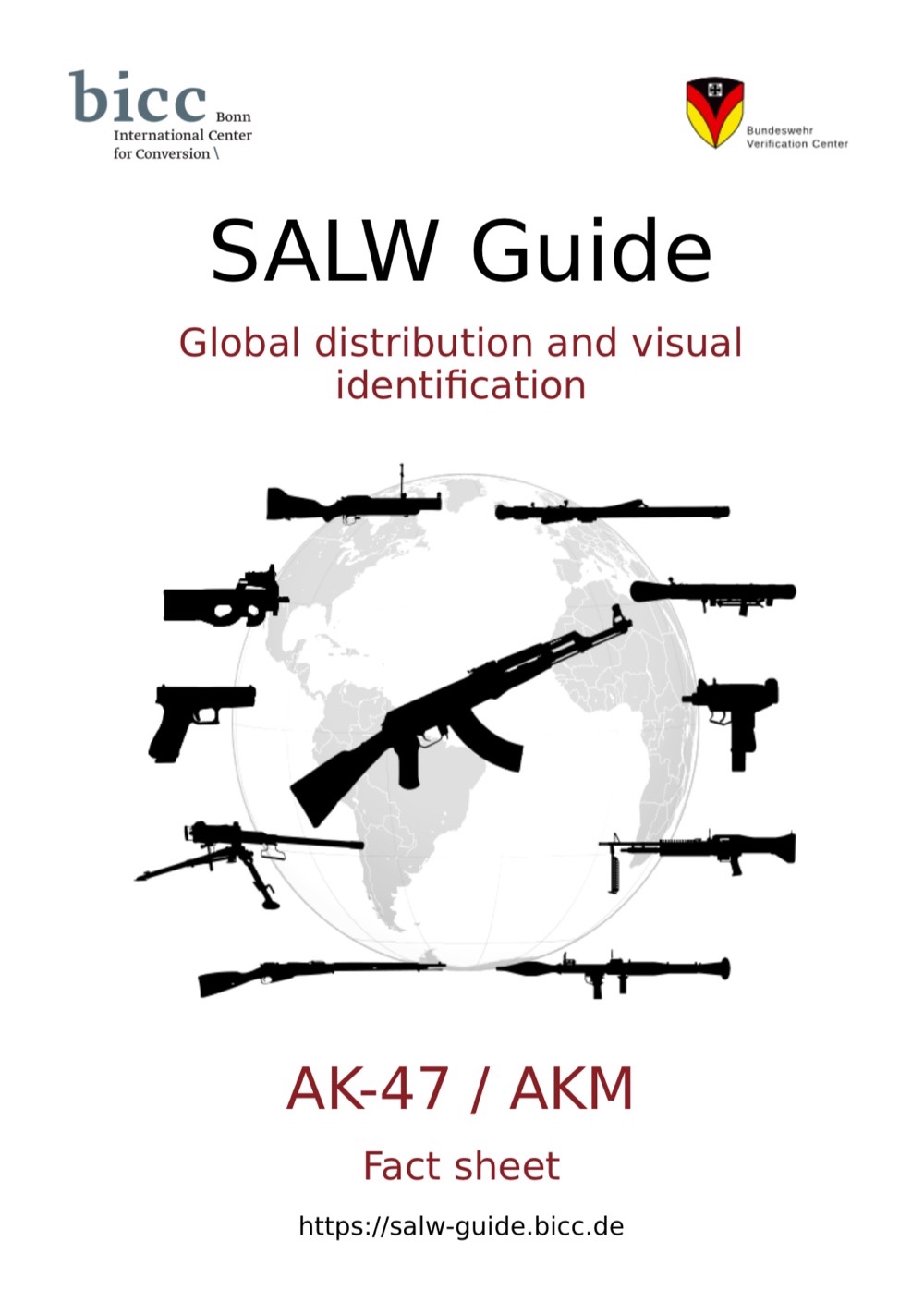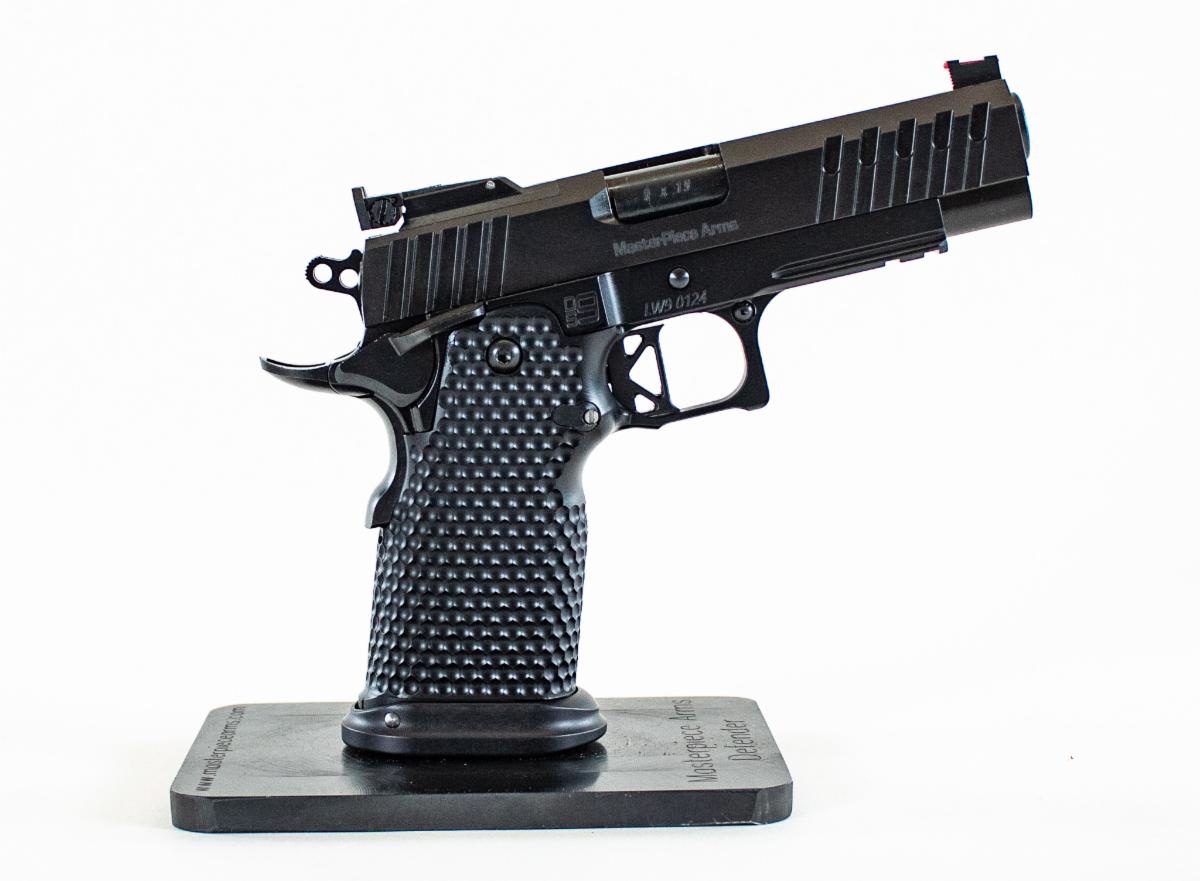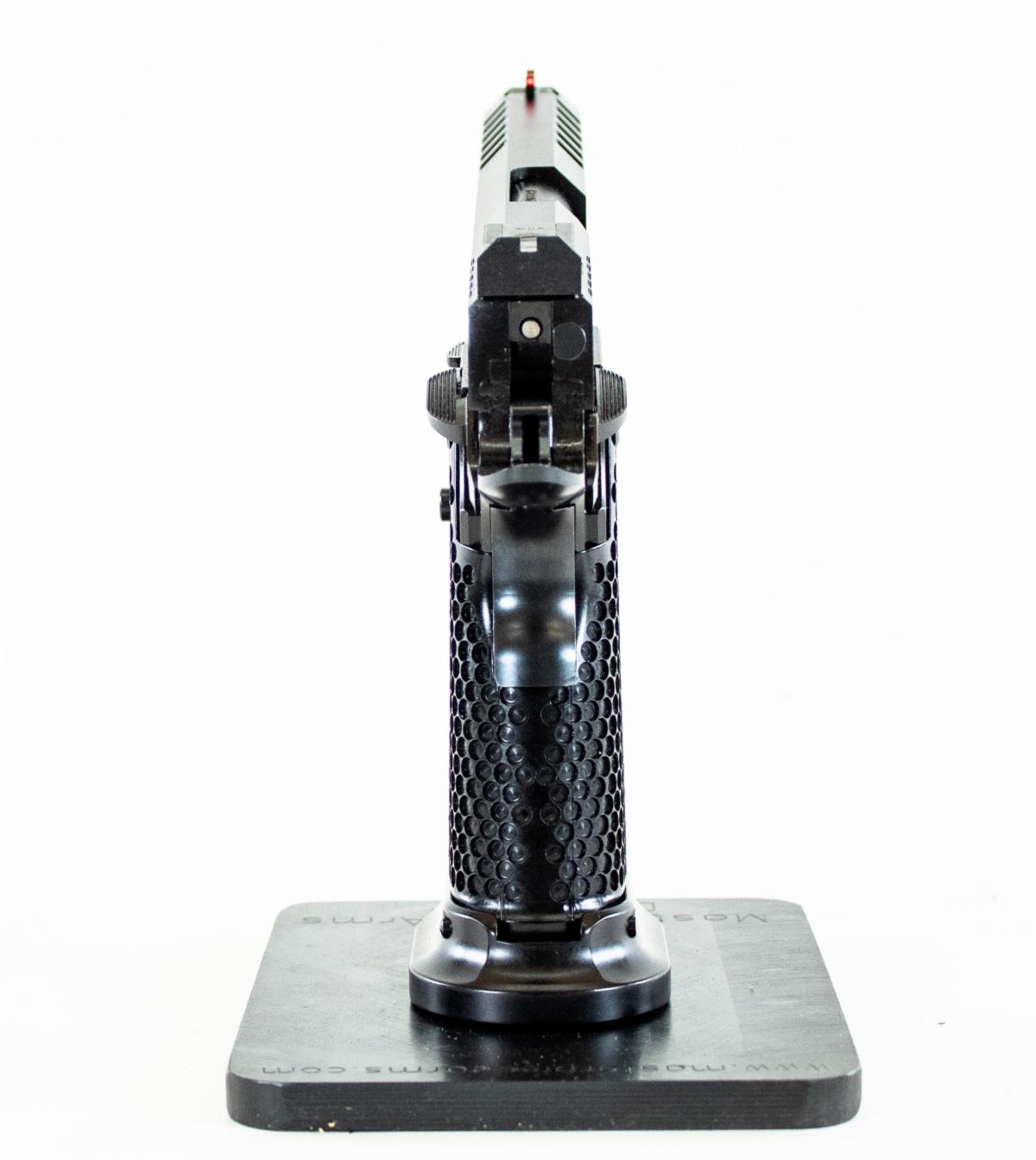If you love the AR and you love power – You’re going to love the .300 Ham’r
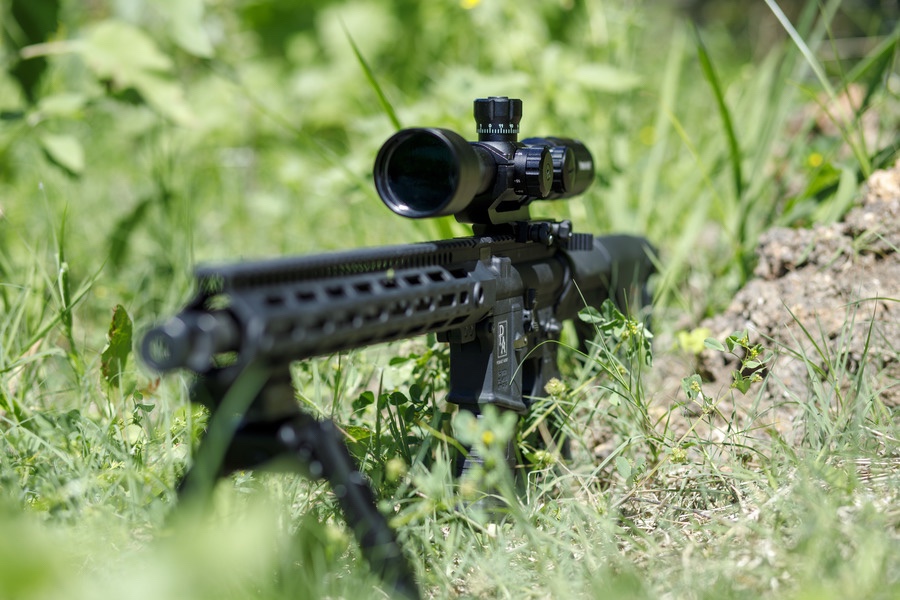
Of course it would be Wilson Combat that made the .300 Ham’r
In this brave new world of crazy ridiculous ballistics, and where the AR-15 is getting more and more nuanced for those who want to build something unique, it would be one of the largest names in combat customs that comes up with the idea of pushing the stopping power agenda further in the platform. You can now get component parts for an upper receiver or a conversion kit to push the power agenda forward with the .300HAM’R.
Forget about balance. Forget about nuance. Forget about subtlety. Get a bigger hammer. The .300 Ham’r is the bigger hammer you never knew you always wanted, in a tiny, little lightweight (original AR-sized) package that delivers lead on target in grams not grains.
OK, maybe that’s a bit too much hyperbole, but the point remains: this is all about business when it comes to stopping power. Here’s the deal: you are getting the same weight and ease of use and familiarity of the AR, with a defense-focused cartridge that matches closely with the .30-30, which means it can stop any threat you can think of and works well in the field for big game, too. Forget about trying to tame this beast though – by the time you can search for components on the market, you’ll be convinced that you should just roll with it and embrace the power like you haven’t before out of an AR-15.
The Ballistics alone might convince you to check into the .300 Ham’r
Would the AR power user have interest in a cartridge where the .300 isn’t suppressed like the Blackout? Some might not be as interested in hard hitting ballistics out of the AR-15 platform because one can already can already get that with the short, thick rounds like the .458 SOCOM and the .50 Beowulf and the .450 Bushmaster?
The AR power user should be interested in a round that is reminiscent of a .30-30, and has higher magazine capacity, better accuracy and drops more lead on target with better wound channel performance than the.6.8SPC, though. That’s the .300 Hammer.
It’s also coming out of a 16-inch barrel, so the tangible ballistics are tangible with less hardware, and creates a more functional CQB gun and gives you more versatility in the field.
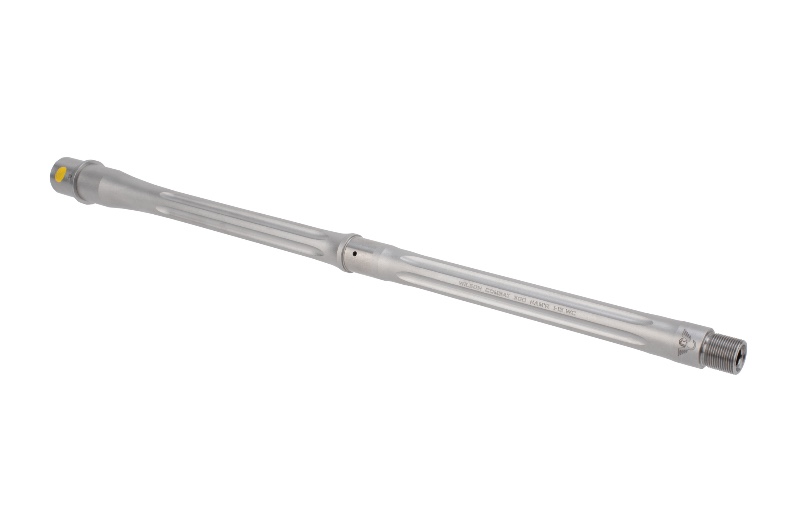
Combine those numbers with about ¼ MOA potential out of a 16” or an 18” barrel and super high-quality and well-polished collateral by Wilson Combat.
Out of a 1:13 twist barrel you can send a plethora of loads (loadouts from Wilson total more than 15 – even if the rest of the world isn’t producing a lot of the now SAAMI specification cartridge, yet), that are interesting for a bunch of different purposes and just about perfect for feral hogs and other depredation, as well as self-defense. Of course, this isn’t the type of round that you can expect to mitigate passthrough on residential walls, but it wasn’t really made for that anyways. It’s the 7.62×39 killer. But it’s also the tactical big brother to the .300BLK, too.
There is also a 1:15” twist rate barrel option for specialty scenarios that include mostly the lower half of the grain weight spectrum for the .300HAM’R (95-130gr). Note, though, that the 1:13” barrel can still do nearly as well with the smaller grain weights, with a bit of tumbling potential, or some small stabilization concerns in colder conditions and with the smallest .308 projectiles at the furthest reaches of the range.
Here’s the comparison to the different rounds in the realm of the normal AR pattern and what you can expect to get from the .300 Ham’r:
.300 HAM’R:
110 grain weight; ~2600 fps velocity; ~1650 ft. lbs. energy at the muzzle
125 grain weight; ~2510 fps velocity; ~1750 ft. lbs. energy at the muzzle
135 grain weight; ~2400 fps velocity; ~1720 ft. lbs. energy at the muzzle
150 grain weight; ~2300 fps velocity; ~1750 ft. lbs. energy at the muzzle
.308 Winchester (MEANT FOR CONTEXT ONLY – Not a legitimate competitor, as sizing and powder charge is much larger than the .300 HAM’R):
147 grain weight; ~2800 fps velocity; ~2550 ft. lbs. energy at the muzzle
6.5 Grendel:
108 grain weight; ~2770 fps velocity; ~1650 ft. lbs. energy at the muzzle
123 grain weight; ~2650 fps velocity; ~1900 ft. lbs. energy at the muzzle
130 grain weight; ~2500 fps velocity; ~1810 ft. lbs. energy at the muzzle
.300BLK:
110 grain weight; ~2350 fps velocity; ~1375 ft. lbs. energy at the muzzle
125 grain weight; ~2250 fps velocity; ~1350 ft. lbs. energy at the muzzle
7.62x39mm:
123 grain weight; ~2410 fps velocity; ~1600 ft. lbs. energy at the muzzle
154 grain weight; ~2100 fps velocity; ~1510 ft. lbs. energy at the muzzle
6.8SPC:
110 grain weight; ~2500 fps velocity; ~1510 ft. lbs. energy at the muzzle
115 grain weight; ~2560 fps velocity; ~1695 ft. lbs. energy at the muzzle
120 grain weight; ~2450 fps velocity; ~1610 ft. lbs. energy at the muzzle
It’s the .300 You always knew you wanted
A nearly 15% increase over the performance of the supersonic factory loads for the .300BLK and about a 10% increase over the 7.62×39 Round means that this .308 diameter projectile is really pushing some limits, considering the short case length. But it’s also stabilized very well in the 1:13” twist barrels because of the engineering on the specially selected bullets and the tight range of grain weights and overall projectile dimensions. All this translates to getting ridiculously small standard deviations in velocity, and substantially better accuracy.
Full capacity. Stunning accuracy. Amazing ballistics. But not silent. So, it’s not perfect. Still, it’s a very good entry in the exceptionally crowded AR cartridge space.
Here’s the variety of things you can do with the HAM’R:
• 6.5 Grendel-like accuracy and hunting prowess out to 650+ yards with better mass, weight and more approachable barrel lengths for combat and hunting carry
• Velocity and energy for big game past 450 yards and more than 400 lbs.
• Shorter barrels and better performance means better CQB where background target hits won’t be a problem
• Exceptional accuracy out to 200 yards – with ¼ MOA potential
• Higher capacity or the same capacity compared with the rounds listed above generally
• Great pedigree and now with a SAAMI specification
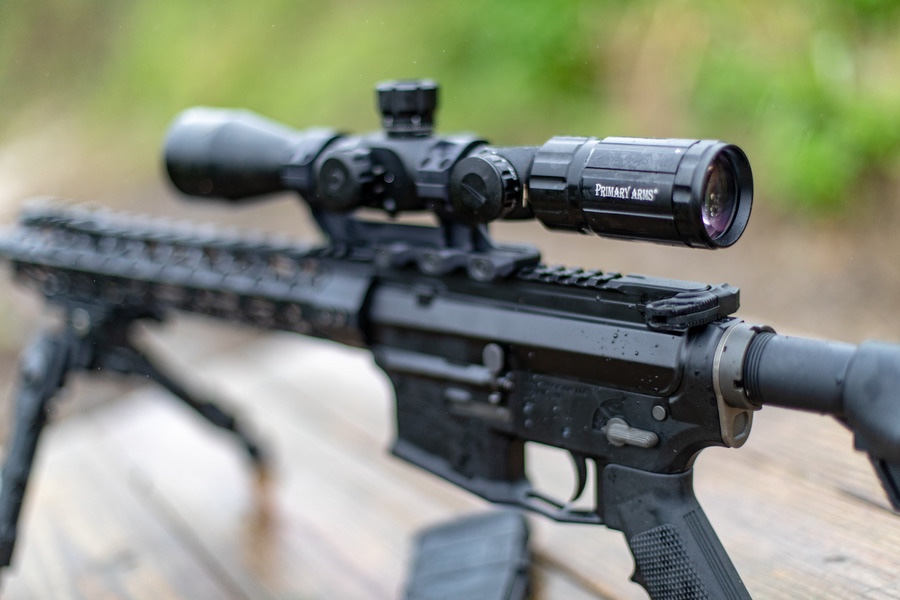
It’s not silent but it hits harder than you thought
One small caveat – it’s not going to suppress better than the .300BLK. In truth, no other rifle cartridge is going to be suppressed better than the .300BLK either. Until/Unless suppressors become a mainstream reality, this won’t be detrimental to the .300 HAM’R market.
Maybe you won’t buy another tax stamp, though, because you’ve already got a 16” barrel which means you can get pretty close to the SBR realm; and you probably already have a .300BLK in your collection of AR’s if you are operating in the tax stamp realm, so you already have a silencer friendly round in your stable.
This is a great cartridge to put alongside the .300BLK because it makes the .300BLK look inferior, except when you want silence, and then, no cartridge makes the .300BLK look inferior. It creates a nice synergy between the two .300’s and for someone who might want to eb in the intermediate diameter bullet range, this is a compelling platform for the AR.
When will I really be able to get one?
Ok, here’s the REAL caveat – the loads aren’t exactly flowing out of the factories even though the SAAMI specification is a done deal now. Wilson has developed something like 17 loads for a variety of different things, but, admittedly, it’s not easy to get any of them right now. And Wilson really isn’t producing billions of rounds of ammunition either, as that hasn’t necessarily been their focal point.
The SAAMI spec is probably enough to get some other factories into the business of testing and then producing loads of their own, but Wilson Combat has poured a lot into the development of the “platform” already. Wilson knows that since it’s got impressive numbers and looks good to the AR conversion crowd, it’s a viable option for them to produce a good stable of loads. All this should inject some supply into the market desiring the loads once the supply chain returns to normal.
You can get some very good looking and well-made hardware suitable for a conversion on your AR-15, but it too, is running into a market full of seekers, and not enough raw material supply to sustain that demand. So, it might be a bit of a waiting game right now.
Conclusions about the .300 Ham’r – is it here for the long-term? Or is it a flash in the pan?
You get very favorable performance, AR-15 compatibility, and potential to 800 yards+ if you have the right setup and conditions, with 650+ in the sweet spot. You can get this out of a 16” or 18” barrel and that same barrel can get you into the reality of ¼ MOA accuracy earlier in the trajectory arc. Higher magazine capacity than comparable rounds, built by one of the Godfather’s of the defense-minded manufacturers and the company has already shown better built-in support than most innovations in the AR space.
What started as a hog gun for the Wilson Ranch, has become the tack driver of the future for the AR-15.
Conclusion: The HAM’R is here to stay.
Primary Focus is a weekly feature from Primary Arms that covers various firearms related subjects.
